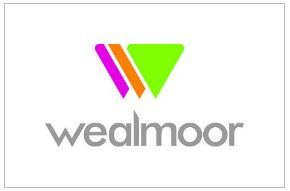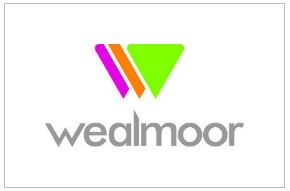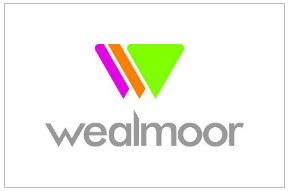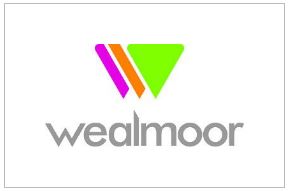Title Page
-
Conducted on
-
Prepared by
-
Location
5.1 Product design/development
-
5.1.1 The company shall provide clear guidelines on any restrictions to the scope of new product developments to control the introduction of hazards which would be unacceptable to the site or customers (e.g. the introduction of allergens, glass packaging or microbiological risks).
-
5.1.2 All new products and changes to product formulation, packaging or methods of processing shall be formally approved by the HACCP team leader or authorised HACCP committee member. This shall ensure that hazards have been assessed and suitable controls, identified through the HACCP system, are implemented. This approval shall be granted before products are introduced into the factory environment.
-
5.1.3 Trials using production equipment shall be carried out where it is necessary to validate that product formulation and manufacturing processes are capable of producing a safe product of the required quality.
-
5.1.4 Shelf-life trials shall be undertaken using documented protocols reflecting conditions experienced during storage, transport and handling. Results shall be recorded and retained and shall confirm compliance with relevant microbiological, chemical and organoleptic criteria. Where shelf-life trials prior to production are impractical, for instance for some long-life products, a documented science based justification for the assigned shelf life shall be produced.
5.2 Product labelling
-
5.2.1 All products shall be labelled to meet legal requirements for the designated country of use and shall include information to allow the safe handling, display, storage, preparation and use of the product within the food supply chain or by the customer. There shall be a process to verify that ingredient and allergen labelling is correct based on the product recipe and ingredient specifications.
-
5.2.2 There shall be effective processes in place to ensure that labelling information is reviewed whenever<br>changes occur to:<br>- the product recipe<br>- raw materials<br>- the supplier of raw materials<br>- the country of origin of raw materials legislation.<br>
-
5.2.3 Where a product is designed to enable a claim to be made to satisfy a consumer group (e.g. a nutritional claim, reduced sugar), the company shall ensure that the product formulation and production process is fully validated to meet the stated claim.
-
5.2.4 Where the label information is the responsibility of a customer or a nominated third party the company<br>shall provide:<br>- information to enable the label to be accurately created<br>information whenever a change occurs which may affect the label information.<br>
5.3 Management of allergens
-
5.3.1 The site shall carry out an assessment of raw materials to establish the presence and likelihood of contamination by allergens (see glossary). This shall include a review of raw material specifications and, where required, obtain additional information from suppliers (e.g. through questionnaires to understand the allergen status of the raw material, its ingredients and the factory in which it is produced)
-
5.3.2 The company shall identify and list allergen-containing materials handled on site. This shall include raw materials, processing aids, intermediate and finished products, and any new product development ingredients or products.
- Conformity
- Non-conformity
- N/A
-
5.3.3 A documented risk assessment shall be carried out to identify routes of contamination and establish documented policies and procedures for handling raw materials, intermediate and finished products to ensure cross-contamination (cross-contact) is avoided. This shall include:<br>- consideration of the physical state of the allergenic material (i.e. powder, liquid, particulate)<br>- identification of potential points of cross-contamination (cross-contact) through the process flow<br>- assessment of the risk of allergen cross-contamination (cross-contact) at each process step<br>identification of suitable controls to reduce or eliminate the risk of cross-contamination(cross-contact).
-
5.3.4 Documented procedures shall be established to ensure the effective management of allergenic materials to prevent cross-contamination into products not containing the allergen. This shall include<br>as appropriate:<br>- physical or time segregation while allergen-containing materials are being stored, processed or packed<br>- the use of separate or additional protective overclothing when handling allergenic materials<br>- use of identified, dedicated equipment and utensils for processing<br>- scheduling of production to reduce changes between products containing an allergen and products not containing the allergen<br>- systems to restrict the movement of airborne dust containing allergenic material<br>- waste handling and spillage controls<br>restrictions on food brought onto site by staff, visitors, contractors and for catering purposes.<br>
-
5.3.5 Where rework is used, or reworking operations are carried out, procedures shall be implemented to ensure rework containing allergens is not used in products that do not already contain the allergen.
-
5.3.6 Where a justified risk-based assessment demonstrates that the nature of the production process is such that cross-contamination (cross-contact) from an allergen cannot be prevented, a warning should be included on the label. National guidelines or codes of practice shall be used when making such a warning statement.
-
5.3.7 Where a claim is made regarding the suitability of a food for allergy or food sensitivity sufferers, the site shall ensure that the production process is fully validated to meet the stated claim and the effectiveness of the process is routinely verified. This shall be documented.
-
5.3.8 Equipment or area cleaning procedures shall be designed to remove or reduce to acceptable levels any potential cross-contamination by allergens. The cleaning methods shall be validated to ensure they are effective and the effectiveness of the procedure routinely verified. Cleaning equipment used to clean allergenic materials shall either be identifiable and specific for allergen use, single use, or effectively cleaned after use.
5.4 Product authenticity, claims and chain of custody
-
5.4.1 The company shall have processes in place to access information on historical and developing threats to the supply chain which may present a risk of adulteration or substitution of raw materials (I.e. fraudulent taw materials). Such information may come from, for example: <br>- trade associations<br>- government sources private resource centres.<br>
-
5.4.2 A documented vulnerability assessment shall be carried out on all food raw materials or groups of raw materials to assess the potential risk of adulteration or substitution. This shall take into account:<br>- historical evidence of substitution or adulteration<br>- economic factors which may make adulteration or substitution more attractive<br>- ease of access to raw materials through the supply chain<br>- sophistication of routine testing to identify adulterants<br>- the nature of the raw material.<br>The output from this plan shall be a documented vulnerability assessment plan.<br>This plan shall be kept under review to reflect changing economic circumstances and market intelligence which may alter the potential risk. It shall be formally reviewed annually.<br>
-
5.4.3 Where raw materials are identified as being at particular risk of adulteration or substitution appropriate assurance and/or testing processes shall be in place to reduce the risk.
-
5.4.4 Where products are labelled or claims are made on finished packs which are dependent on a status of<br>a raw material including:<br>- specific provenance or origin<br>- breed/varietal claims<br>- assured status (e.g. GlobalGAP)<br>- genetically modified organism (GMO) status<br>- identity preserved<br>- named specific trademarked ingredients <br><br>The facility shall maintain purchasing records, traceability of raw material usage and final product packing records to substantiate claims. The site shall undertake documented mass balance tests at a<br>frequency to meet the particular scheme requirements or at least every 6 months in the absence of a scheme-specific requirement.<br>
-
5.4.5 Where claims are made about the methods of production (e.g. organic, Halal, Kosher) the site shall maintain the necessary certification status in order to make such a claim.
-
5.4.6 The process flow for the production of products where claims are made shall be documented and potential areas for contamination or loss of identity identified. Appropriate controls shall be established to ensure the integrity of the product claims.
5.5 Product packaging
-
5.5.1 When purchasing or specifying food contact packaging the supplier of packaging materials shall be made aware of any particular characteristics of the food (e.g. high fat content, pH, usage conditions such as microwaving, other packaging used on the product) which may affect packaging suitability. Certificates of conformity or other evidence shall be available for product packaging to confirm it complies with applicable food safety legislation and is suitable for its intended use.
-
5.5.2 Product liners and bags purchased by the company for use in direct contact with ingredients, or work in process, shall be appropriately coloured (e.g. contrasting colour to the product) and resistant to tearing to prevent accidental contamination.
-
5.5.3 The company shall have a procedure to manage obsolete packaging (including labels). This shall include: <br>- mechanisms to prevent accidental use of obsolete packaging<br>- control and disposal of obsolete packaging<br>- appropriate procedures for the disposal of obsolete printed materials (e.g. rendering trademarked materials unusable).<br>
5.6 Product inspection and laboratory testing
5.6.1 Product inspection and testing
-
5.6.1.1 There shall be a scheduled programme of testing covering products and the processing environment, which may include microbiological, chemical, physical and organoleptic testing according to risk. The methods, frequency and specified limits shall be documented.
-
5.6.1.2 Test and inspection results shall be recorded and reviewed regularly to identify trends. The significance of external laboratory results shall be understood and acted upon accordingly.<br>Appropriate actions shall be implemented promptly to address any unsatisfactory results or trends.<br>
-
5.6.1.3 The site shall ensure that a system of ongoing shelf-life assessment is in place. This shall be based on risk and shall include sensory analysis and, as applicable, microbiological testing and relevant chemical factors such as pH and aw. Records and results from shelf-life tests shall verify the shelf-life period indicated on the product.
5.6.2 Laboratory testing
-
5.6.2.1 Pathogen testing (including pathogens tested as part of the environmental testing) shall be subcontracted to an external laboratory or, where conducted internally, the laboratory facility shall be fully segregated from the production and storage areas and have operating procedures to prevent any risk of product contamination.
-
5.6.2.2 Where routine testing laboratories are present on a manufacturing site, they shall be located, designed and operated to eliminate potential risks to product safety. Controls shall be documented,<br>implemented and shall include consideration of:<br>- design and operation of drainage and ventilation systems<br>- access and security of the facility<br>- movement of laboratory personnel<br>- protective clothing arrangements<br>- processes for obtaining product samples disposal of laboratory waste.<br>
-
5.6.2.3 Where the company undertakes or subcontracts analyses which are critical to product safety or legality, the laboratory or subcontractors shall have gained recognised laboratory accreditation or operate in accordance with the requirements and principles of ISO/IEC 17025. Documented justification shall be available where accredited methods are not undertaken.
-
5.6.2.4 Procedures shall be in place to ensure reliability of laboratory results, other than those critical to safety and legality specified in clause 5.6.2.3. These shall include:<br>- use of recognised test methods, where available<br>- documented testing procedures<br>- ensuring staff are suitably qualified and/or trained and competent to carry out the analysis required<br>- use of a system to verify the accuracy of test results (e.g. ring or proficiency testing)<br>use of appropriately calibrated and maintained equipment.
-
5.6.2.5 The significance of laboratory results shall be understood and acted upon accordingly. <br>Appropriate action shall be taken promptly to address any unsatisfactory results or trends.<br>Where legal limits apply, these shall be understood and appropriate action taken promptly to address any exceedance of these limits.
5.7 Product release
-
5.7.1 Where products require positive release, procedures shall be in place to ensure that release does not occur until all release criteria have been completed and release has been authorised.













